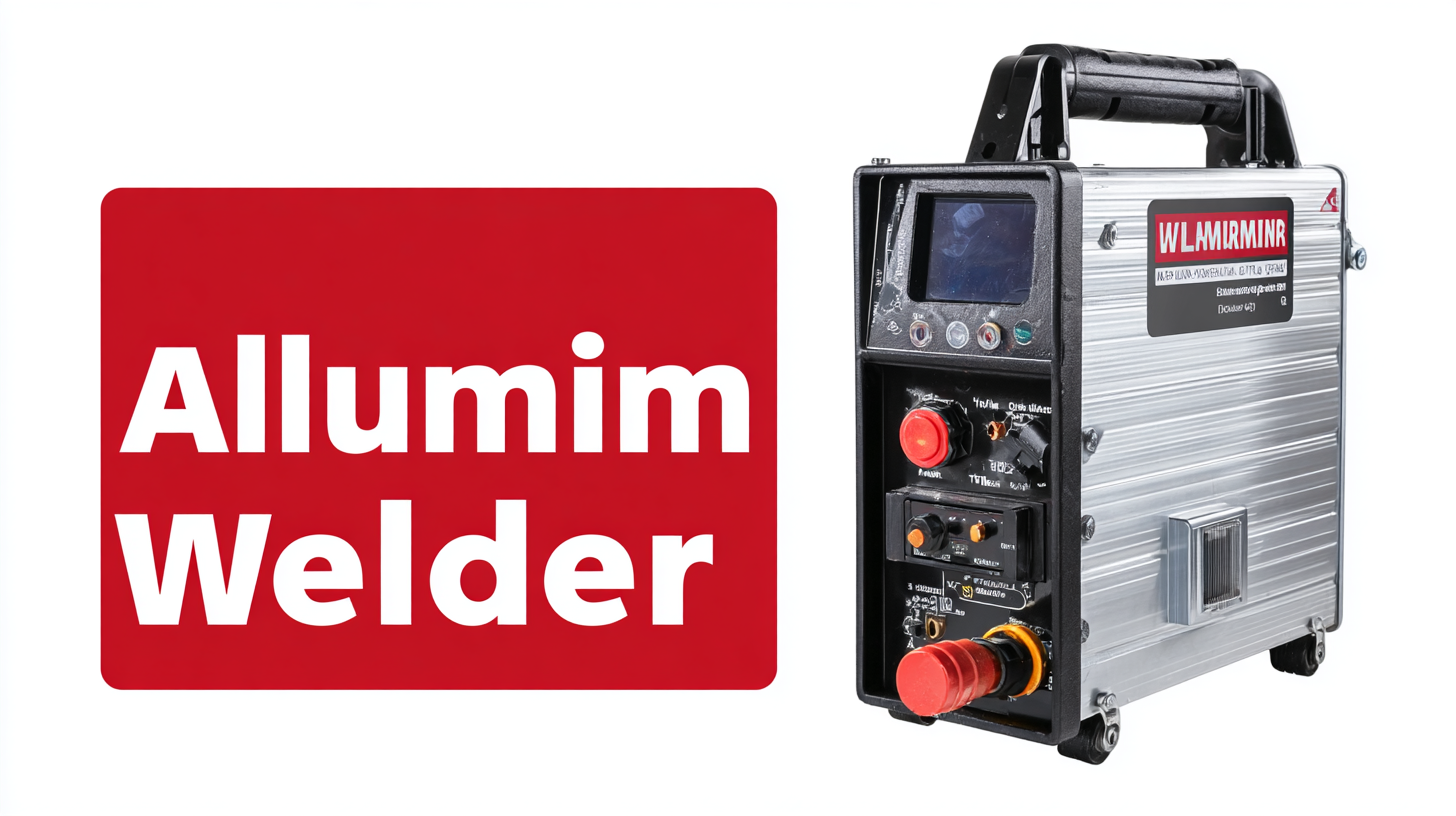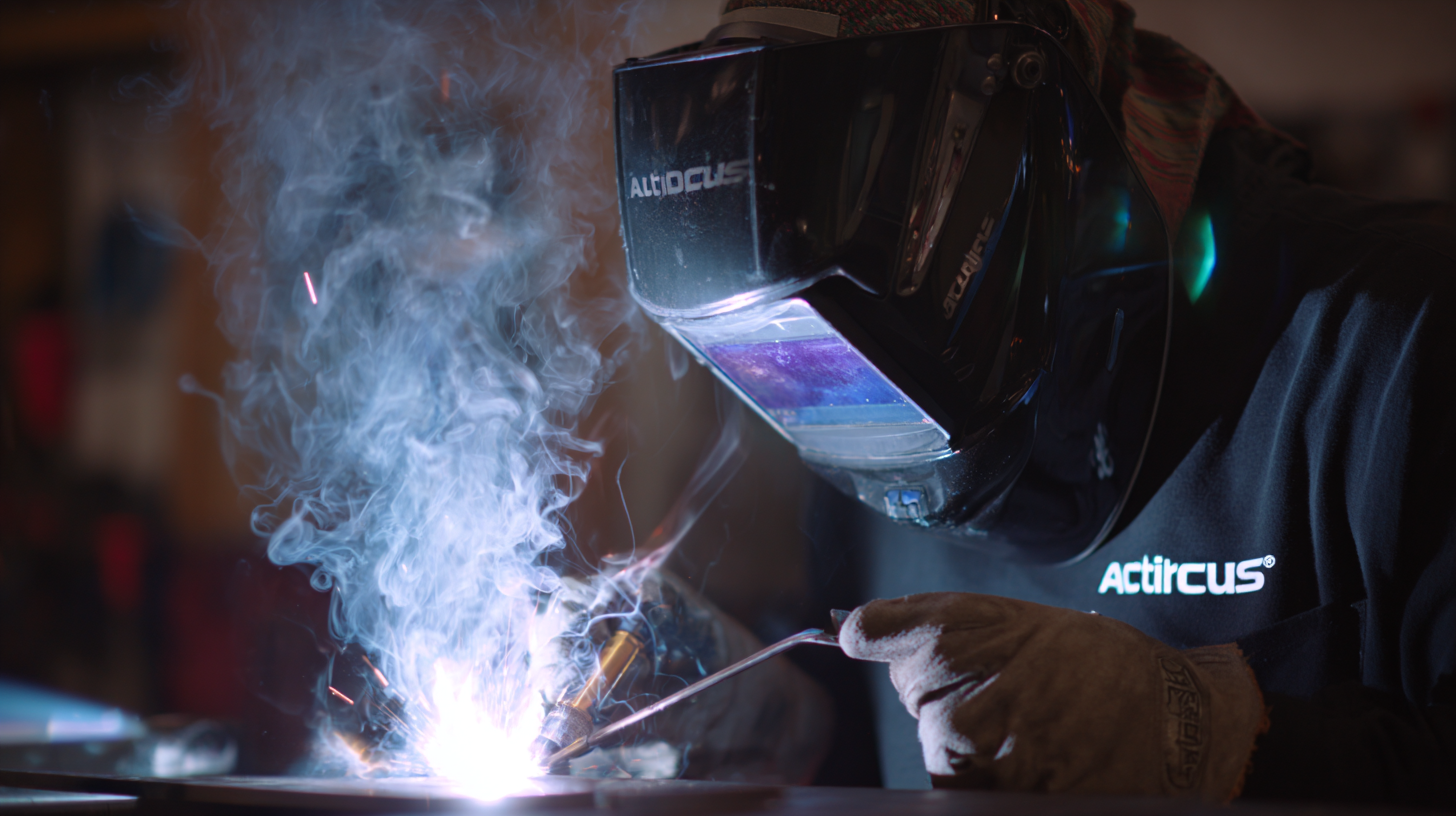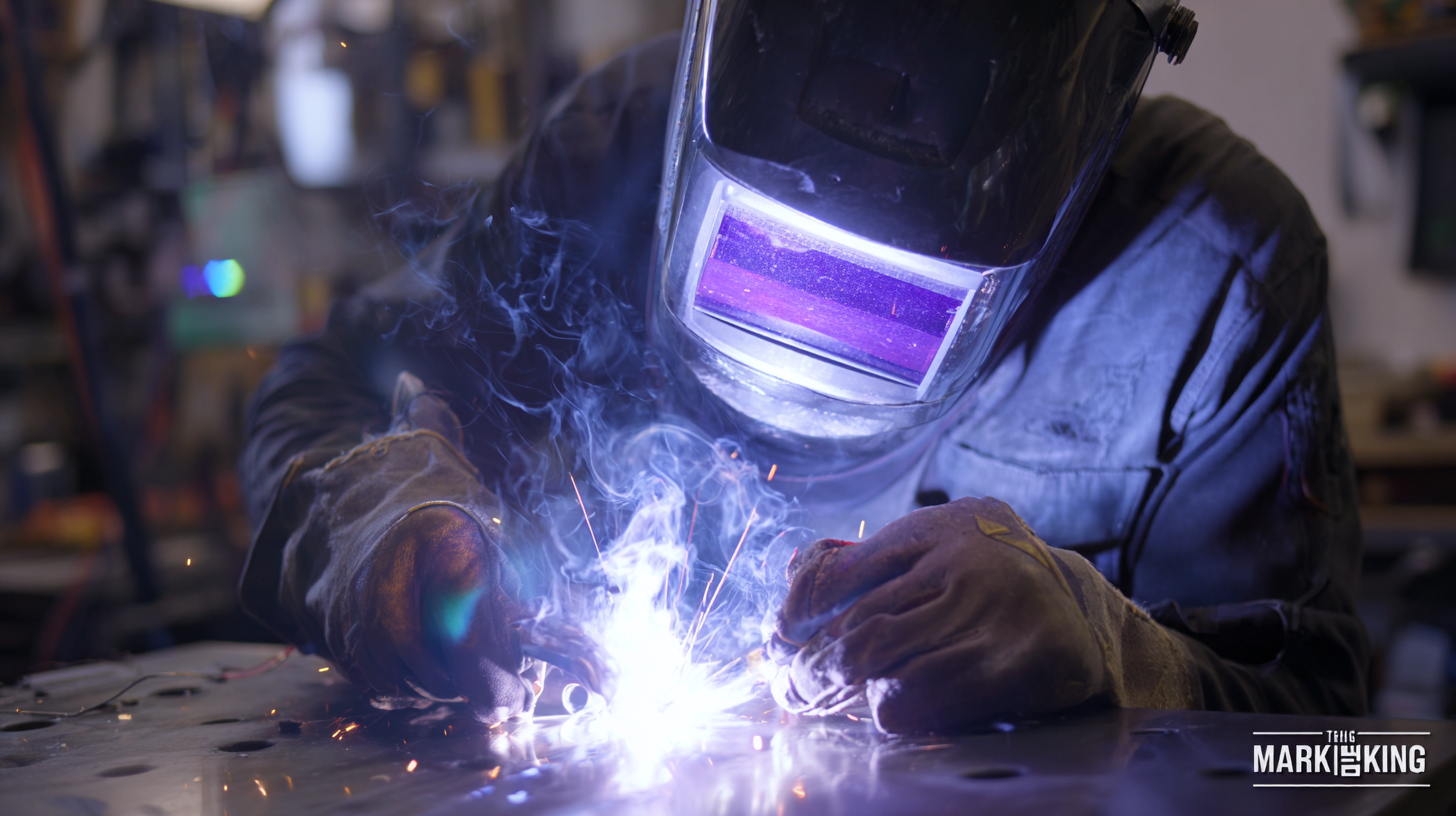When it comes to metalworking, choosing the right tools is essential for achieving high-quality results, and this is particularly true when it comes to selecting an Aluminum Welder. With the increasing demand for aluminum components in various industries, understanding the specific needs of your welding projects is crucial. Whether you are a DIY enthusiast or a professional fabricator, the right aluminum welder can make a significant difference in the efficiency and quality of your work. This blog will guide you through seven essential tips that will help you navigate the complexities of aluminum welding equipment. From understanding the industry production standards to recognizing key features that enhance performance, these insights will ensure that you invest in a welder that not only meets your project requirements but also adheres to the best practices in the field.

When selecting the best aluminum welder for your projects, it's crucial to focus on several key features that can significantly impact your results. First, consider the type of welding process that suits your needs. Common methods include TIG (Tungsten Inert Gas) and MIG (Metal Inert Gas). TIG welding provides greater precision, making it ideal for intricate work, while MIG welding is faster and more suited for larger projects. Understanding the differences can help you choose a machine that aligns with your skill level and project requirements.

Another essential feature to look for is the welder's amperage range. A versatile welder should have an ample amperage spectrum to handle various material thicknesses and welding techniques. Additionally, assess the machine's portability and weight, especially if you plan to work on-site. A lightweight, compact unit will offer you flexibility without compromising power. Lastly, make sure to check for essential safety features, such as thermal overload protection, which prevents the machine from overheating during prolonged use, ensuring both your safety and the longevity of your welder.
When it comes to aluminum welding, understanding different welding techniques is crucial for selecting the right approach for your projects. Among the various methods available, Gas Metal Arc Welding (GMAW) remains popular due to its flexibility and efficiency. Utilizing argon as a shielding gas significantly enhances the quality of the welds, as it protects the molten pool from atmospheric contamination. According to reports, argon is now the predominant choice among professionals, largely replacing older alternatives. This shift has been driven by the gas's inert properties, which improve the integrity of the welds on aluminum alloys, especially when working with dissimilar materials.
Moreover, advances in technology are changing the landscape of aluminum welding. New innovations such as high-power diode laser welding offer the ability to join aluminum films with improved precision and less thermal distortion compared to traditional methods. This not only enhances the structural performance but also opens doors for potential applications in industries where melding lightweight materials is becoming increasingly crucial. Understanding these techniques and their respective benefits can significantly inform your decision-making process when choosing an aluminum welder tailored to your specific needs.
| Welding Technique | Advantages | Disadvantages | Best Use Cases |
|---|---|---|---|
| TIG Welding | Precise control and clean welds | Slower process, requires more skill | Thin materials and artistic projects |
| MIG Welding | Fast and efficient for thicker materials | Less control over weld appearance | Production and manufacturing settings |
| Stick Welding | Versatile and can be used outdoors | Produces slag, requires clean-up | Repairs and maintenance tasks |
| Flux-Cored Welding | Good for thick metal and outdoor usage | Less clean welds, needs more cleanup | Heavy-duty construction and fabrication |
When choosing an aluminum welder, balancing cost and quality is crucial for the success of your projects. While it's tempting to opt for the most affordable option, it's important to remember that cheaper welders may lack durability and performance. Investing in a high-quality aluminum welder can save you money in the long run by reducing the need for repairs and replacements. Therefore, it’s essential to evaluate the features and build quality of each welder within your budget range to ensure you’re making a wise investment.
Additionally, consider the costs associated with ongoing maintenance and the availability of replacement parts when evaluating your options. Sometimes a lower initial price tag can lead to higher costs over time if the welder requires frequent repairs or if the manufacturer has poor customer support. Look for reviews and recommendations that highlight not just the upfront cost but the overall value the welder offers. By weighing these factors carefully, you can find an aluminum welder that meets your project needs without compromising quality.
To ensure the longevity and optimal performance of your aluminum welder, proper maintenance is key. Regular cleaning is essential, as accumulated dust and debris can interfere with the welder's efficiency. After each use, take a few minutes to wipe down the torch and cooling passages to prevent buildup that could lead to overheating. Additionally, inspect the cables and connectors regularly for any signs of wear or damage, as these components are crucial for a secure and safe welding process.

Another important aspect of maintaining your aluminum welder is ensuring proper storage. Keep your welder in a dry, temperature-controlled environment to prevent corrosion. Utilizing protective covers can shield your equipment from dust and moisture, further extending its life. Further, don't forget to routinely check and replace consumable parts like nozzles and tips as needed, since worn components can negatively affect your weld quality and create more work for you in the long run. These simple yet effective maintenance practices can help you get the most out of your aluminum welder and ensure it's ready for your next project.
As we approach 2025, the landscape of aluminum welding technology is evolving rapidly, influenced by trends across various sectors, including automotive and construction. With advancements such as laser welding and friction stir welding gaining prominence, welders need to stay ahead of these innovations to ensure optimal performance in their projects. In particular, the global market for welding machinery is set to grow significantly, reaching an estimated $22.3 billion by 2030, highlighting the necessity for skilled operators proficient in the latest techniques.
When selecting an aluminum welder, consider the specific demands of your projects. One essential tip is to evaluate the welder's capabilities in handling different aluminum grades and thicknesses. This versatility will not only enhance the quality of your work but also expand the range of projects you can undertake. Additionally, keep an eye on the welding technology you invest in. The industry trends suggest an increasing shift towards machines that incorporate smart predictive maintenance systems, significantly reducing downtime and ensuring reliable operation.
Hiring a welder with experience in contemporary methods will become increasingly important as the technology evolves. Look for professionals who demonstrate proficiency in both traditional and modern aluminum welding techniques, ensuring they can adapt to shifting industry standards and client needs. These considerations will help position you—and your projects—for success in the coming years.
